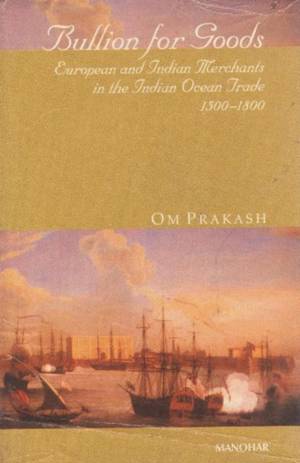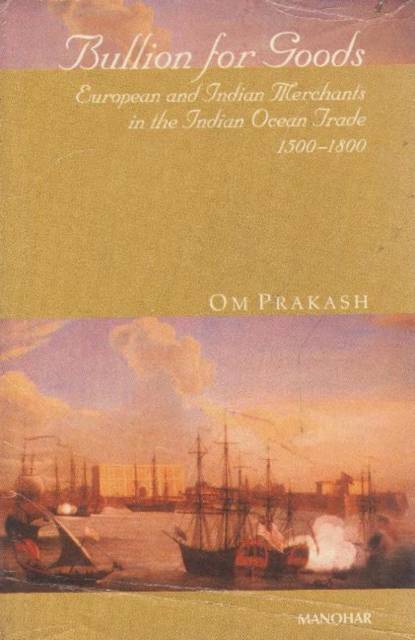
- Afhalen na 1 uur in een winkel met voorraad
- Gratis thuislevering in België vanaf € 30
- Ruim aanbod met 7 miljoen producten
- Afhalen na 1 uur in een winkel met voorraad
- Gratis thuislevering in België vanaf € 30
- Ruim aanbod met 7 miljoen producten
Zoeken
Bullion for Goods
European and Indian Merchants in the Indian Ocean Trade 1500-1800
Om Prakash
Hardcover | Engels
€ 79,20
+ 158 punten
Omschrijving
The spectacular rise in world trade following the great discoveries of the closing years of the fifteenth century had important implications for each of the major segments of the newly emerging early modern international economy. As far as Asia was concerned, the commercial operations of the European corporate enterprises as well as private traders in the Indian Ocean region between the sixteenth and the eighteenth centuries had far reaching consequences for the economies and the polities of the countries of the region.
Asian merchants engaged in the Indian Ocean trade interacted with the European intruders into the Ocean in a variety of ways. The twenty-one essays included in this volume are firmly embedded in original archival sources. They deal mainly with issues arising out of the Europeans' commercial presence in the Indian Ocean region and the interaction they had with their Asian counterparts. This volume discusses how, over a span of three centuries, the Indian economy was integrated into the world economy as a result of these interactions. The macroeconomic implications of the European encounter for the Indian economy are analysed in detail. Another important area explored at some length is the monetary history of the subcontinent in the early modern period.
This collection of essays will be of interest to the historians of India, and of the Indian Ocean alike. It will also have a great deal of appeal for the historians of early modern Asia, as well as Europe. Those interested in what is being increasingly described as world history will also find the volume useful.
Asian merchants engaged in the Indian Ocean trade interacted with the European intruders into the Ocean in a variety of ways. The twenty-one essays included in this volume are firmly embedded in original archival sources. They deal mainly with issues arising out of the Europeans' commercial presence in the Indian Ocean region and the interaction they had with their Asian counterparts. This volume discusses how, over a span of three centuries, the Indian economy was integrated into the world economy as a result of these interactions. The macroeconomic implications of the European encounter for the Indian economy are analysed in detail. Another important area explored at some length is the monetary history of the subcontinent in the early modern period.
This collection of essays will be of interest to the historians of India, and of the Indian Ocean alike. It will also have a great deal of appeal for the historians of early modern Asia, as well as Europe. Those interested in what is being increasingly described as world history will also find the volume useful.
Specificaties
Betrokkenen
- Auteur(s):
- Uitgeverij:
Inhoud
- Aantal bladzijden:
- 426
- Taal:
- Engels
Eigenschappen
- Productcode (EAN):
- 9788173045387
- Verschijningsdatum:
- 30/09/2024
- Uitvoering:
- Hardcover
- Formaat:
- Genaaid
- Afmetingen:
- 152 mm x 229 mm
- Gewicht:
- 664 g

Alleen bij Standaard Boekhandel
+ 158 punten op je klantenkaart van Standaard Boekhandel
Beoordelingen
We publiceren alleen reviews die voldoen aan de voorwaarden voor reviews. Bekijk onze voorwaarden voor reviews.








